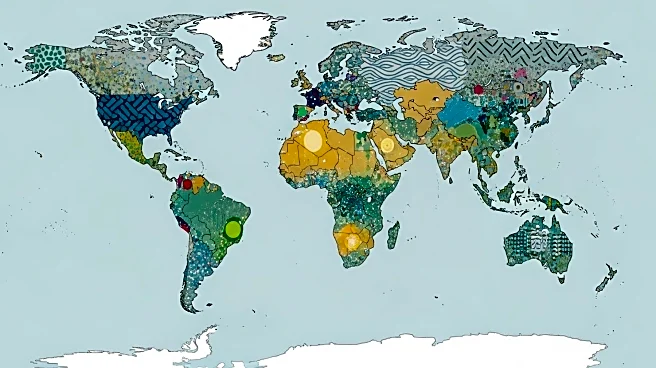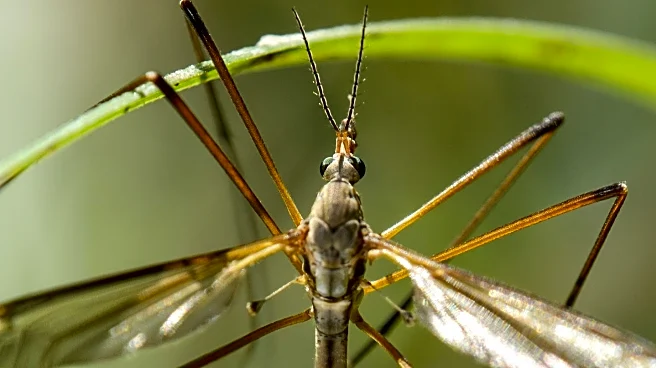What is the story about?
What's Happening?
A study conducted by the University of Portsmouth, utilizing data from the Big Microplastic Survey, has revealed significant regional differences in plastic pollution across global coastlines. The research, published in Environmental Monitoring and Assessment, analyzed nearly 59,000 pieces of plastic collected from 1,089 surveys conducted by volunteers in 39 countries between 2018 and 2024. The study found that nurdles, pre-production plastic pellets, were the most common type of plastic pollution, with the Netherlands reporting the highest levels due to a shipping container disaster. Bio-beads, used in wastewater treatment, were heavily concentrated in the Netherlands and Honduras, while secondary plastics were more prevalent in Kenya and Honduras. The study underscores the power of citizen science in gathering extensive data on plastic pollution, which traditional methods alone could not achieve.
Why It's Important?
The findings from this study are crucial as they highlight the global nature of plastic pollution and the varying challenges faced by different regions. The data collected by citizen scientists can inform international efforts to tackle plastic pollution, such as the legally binding treaty agreed upon by the United Nations Environment Assembly in 2022. This treaty calls for improved monitoring and reporting by member states, and the study's data can support these efforts. The involvement of non-governmental organizations in driving successful citizen science projects further emphasizes the importance of community engagement in environmental issues. The study's results can aid policymakers and environmental groups in developing targeted strategies to address plastic pollution based on regional needs.
What's Next?
The ongoing negotiations for the United Nations treaty to end plastic pollution will likely incorporate findings from studies like this to enhance monitoring and reporting mechanisms. As the treaty progresses, member states may need to implement more robust citizen science initiatives to gather data and track pollution trends effectively. Additionally, the study's insights could lead to increased collaboration between governments and non-governmental organizations to sustain volunteer engagement and expand the scope of citizen science projects. These efforts could result in more comprehensive global strategies to mitigate plastic pollution.
Beyond the Headlines
The study highlights the ethical and cultural dimensions of plastic pollution, as it affects communities differently based on regional practices and industrial activities. The reliance on citizen science also raises questions about the sustainability of volunteer-driven research and the need for institutional support to maintain engagement. Furthermore, the study's findings could prompt a reevaluation of industrial practices, particularly in regions with high concentrations of specific types of plastic pollution, such as nurdles and bio-beads.
AI Generated Content
Do you find this article useful?
















